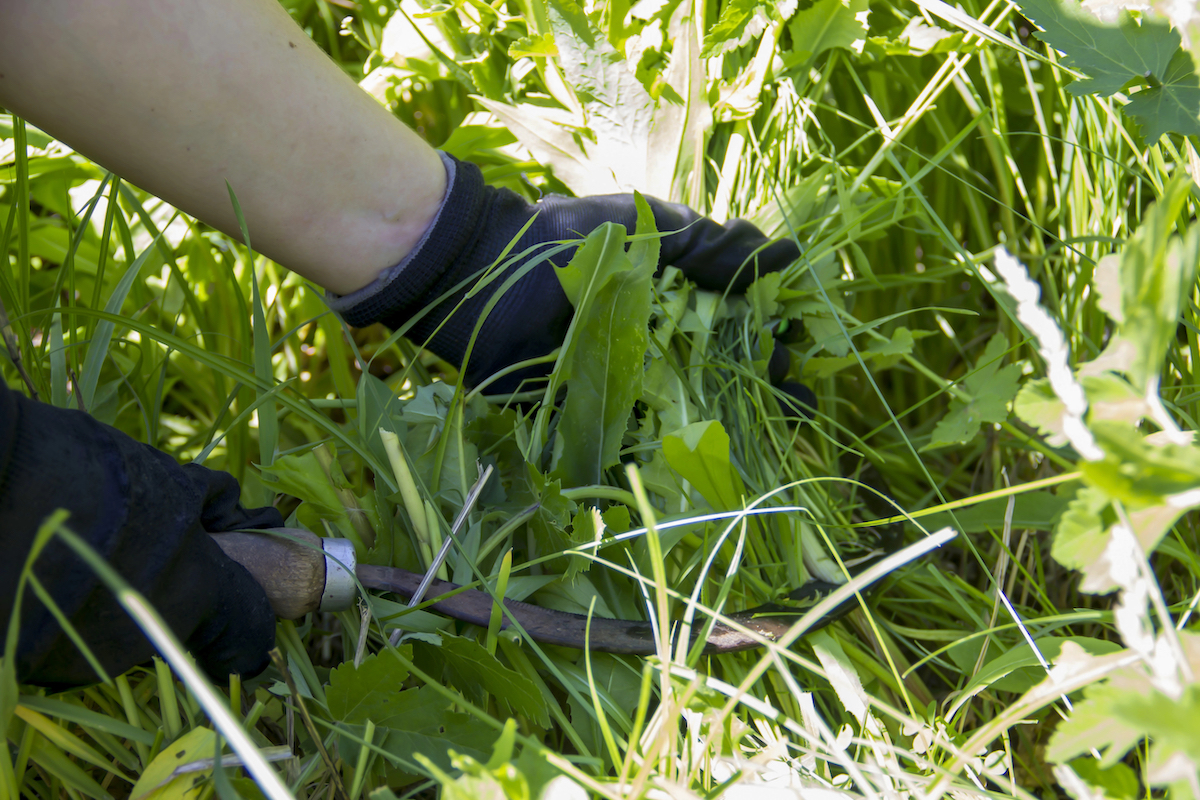

We may earn revenue from the products available on this page and participate in affiliate programs. Learn More ›
Although not all of these methods will work all of the time, weed management should always begin with the most eco-friendly choices. Anything we can do to prevent the use of harmful herbicides is a good thing. Overusing herbicides can contaminate groundwater and harm beneficial plants and soil. Studies have shown that many of these chemicals remain in the soil and harm insects and microbes that are essential to soil health.
Although today’s herbicides are more selective than in the past, they can still pose health dangers to people, animals, desired plants, and soil. Instead, keep weeds away with these more natural approaches.
How to Kill Weeds Naturally
Getting rid of weeds is a two-step process: Kill them and prevent them. We’ll start with some ways to kill the weeds that are plaguing your lawn and gardens.
Spray weeds with vinegar.
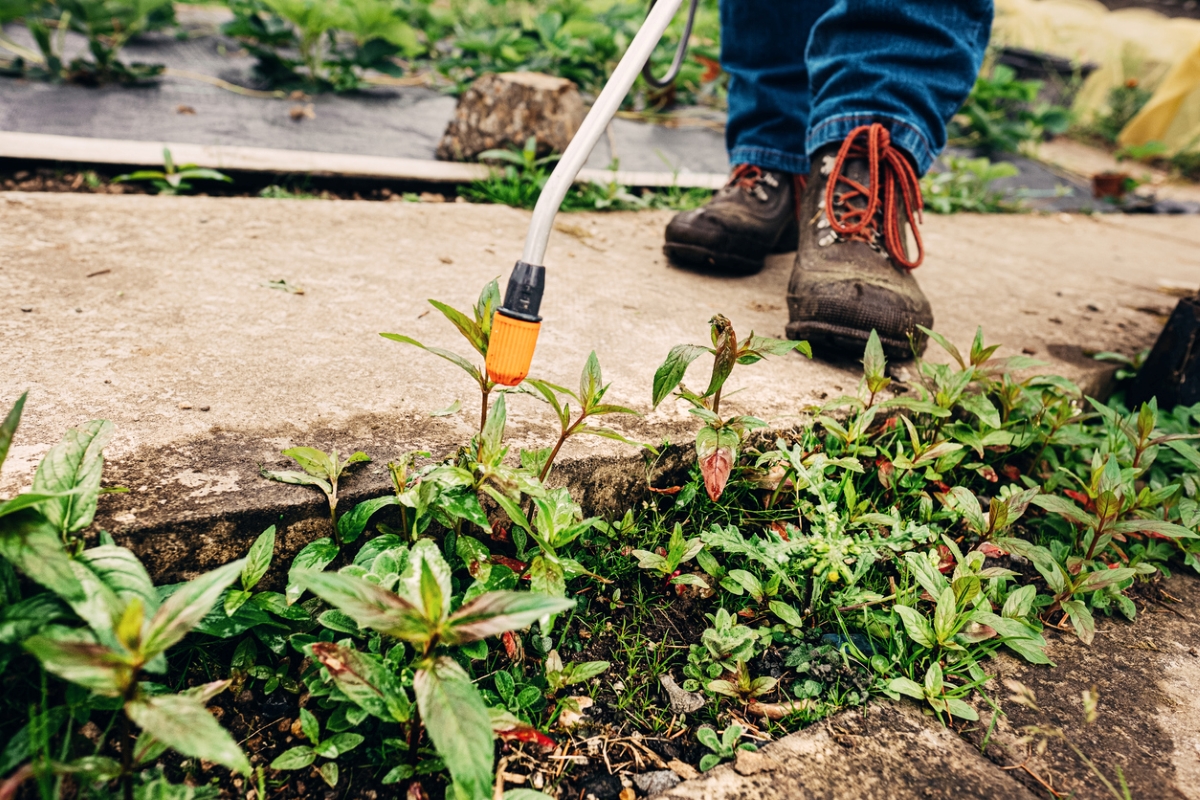
Apply undiluted household vinegar to the leaves of weeds with a spray bottle, pump sprayer, or brush, as long as you can direct it only to the plants you wish to get rid of, because vinegar cannot differentiate between weeds and other plants, and will kill whatever it comes in contact with. To avoid contaminating nearby plants, apply vinegar early in the morning when there’s little wind. Also, choose a cloudless day, which ensures that rain won’t wash it off before it works its magic.
Household vinegar is usually effective but if it fails to work in your yard, consider using a commercial preparation that contains a higher concentration of vinegar. Your local extension office can offer advice about what works well in your area and how to use it safely.
Sprinkle table salt at the base of the weed.
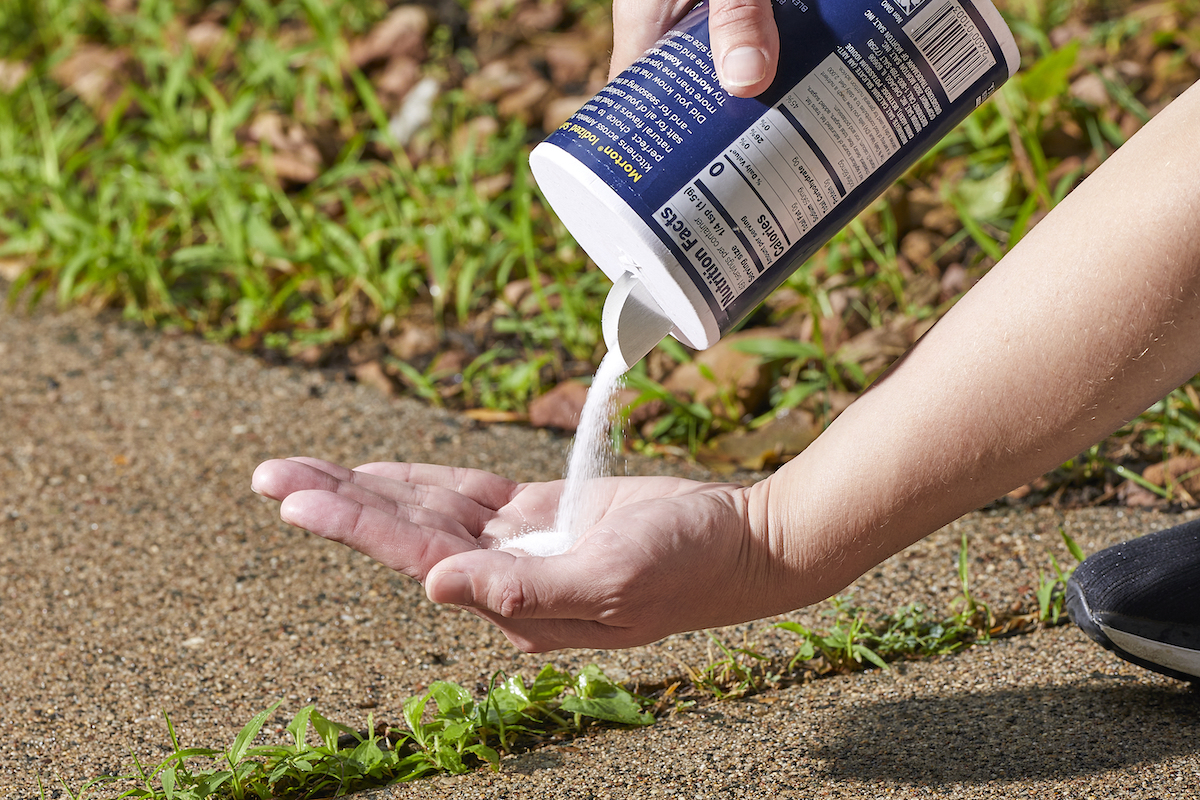
Regular old table salt is very effective at killing weeds. Put just a pinch of this natural weed killer down at the base of each unwanted plant. Be sure to use table salt (sodium chloride), not Epsom salt (magnesium sulfate), as the latter is not an effective weed killer. Salt is useful around the house in many ways and in the garden will render soil inhospitable for several months, so make sure you apply just a small amount and only where needed. Avoid getting it on your grass or other plants.
Spray DIY herbicidal soap.
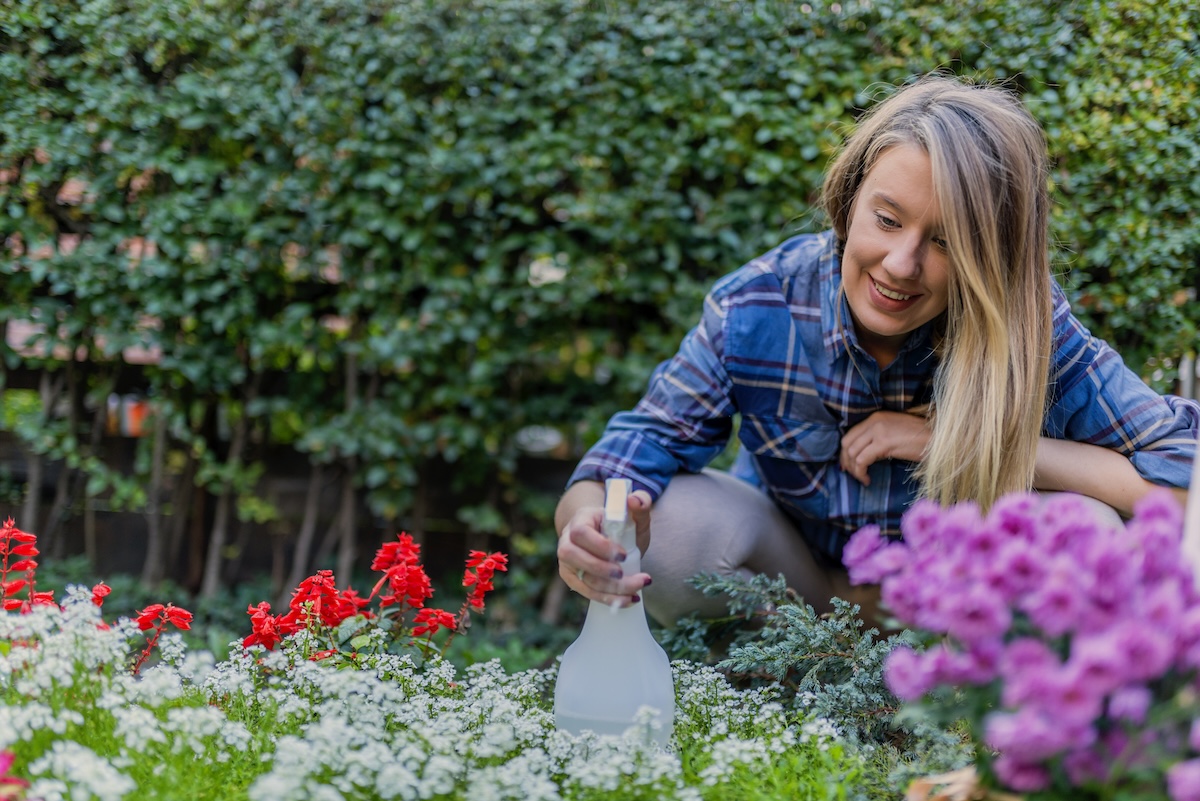
If you’re not having luck with just vinegar or just salt, add dish soap to the party and make your own weed killer using this natural weed killer recipe. Fill an empty gallon jug with water, less 2 cups. Add 1 cup of regular household vinegar, 1 cup of table salt, and 1 tablespoon of dish soap. Shake well. Put the mixture in a sprayer and apply it to the offending weeds, but be judicious. This concoction might kill any plants it touches, so be careful not to get it on your prized perennials.
Pour boiling water on the unwanted plant.
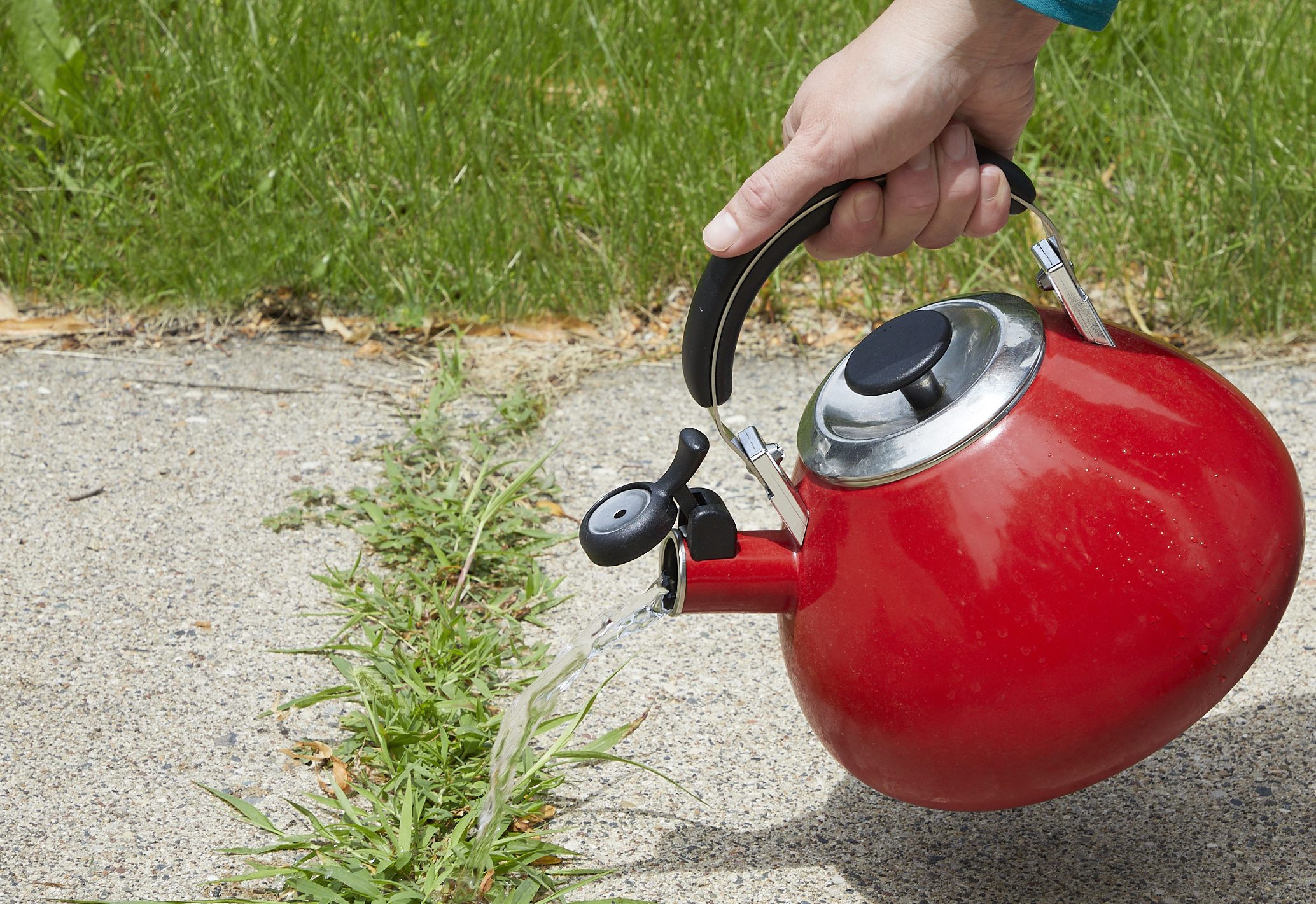
If you’ve researched how to kill weeds naturally, you’ve probably read about using boiling water, because it works. After boiling water in a pot or kettle on the stove, take it to the garden, and pour a stream of water carefully over each unwanted plant. Tough perennial weeds with long tap roots may take two or three applications but will eventually stop coming back. Use pot holders, of course, and dress for the task by wearing long pants and closed-toe shoes.
Smother the weeds with recycled cardboard.
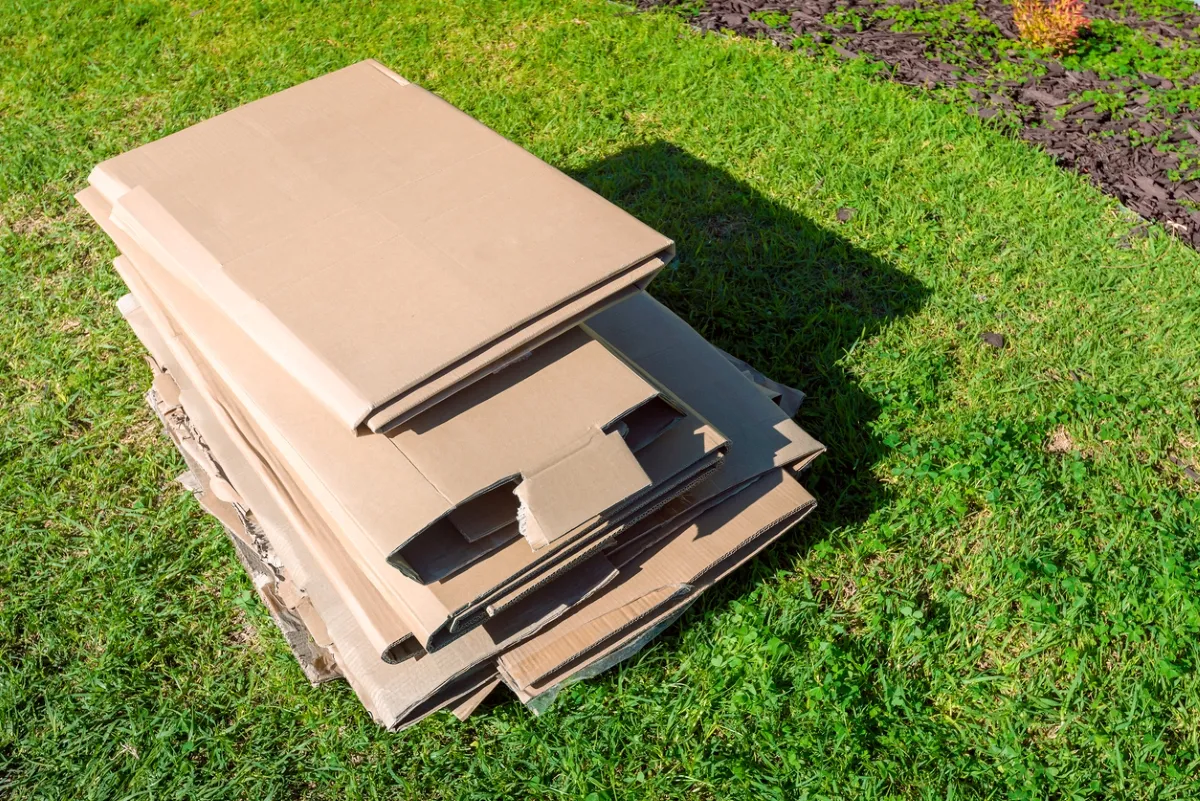
To prepare a garden bed for planting, smother weeds and help prevent new ones from growing by covering the soil with old cardboard boxes or even newspapers. A thick layer will keep sunlight from reaching weed seeds so they can’t sprout. First, remove visible weeds and wet the soil, and then lay the recycled paper product down, wetting it thoroughly again before covering it with a quality mulch.
Placing the opaque layer on for 4 to 5 weeks at a time keeps sunlight from reaching weed seeds so they do not germinate. Leave the bed open for 1 or 2 weeks and repeat this DIY weed killer cycle a couple times to increase success. This smothering method also works with plastic tarps, which you can reuse. However, remaining cardboard and newspaper eventually break down into the soil, improving chances of earthworms and healthy soil activity.
Use a weed torch.
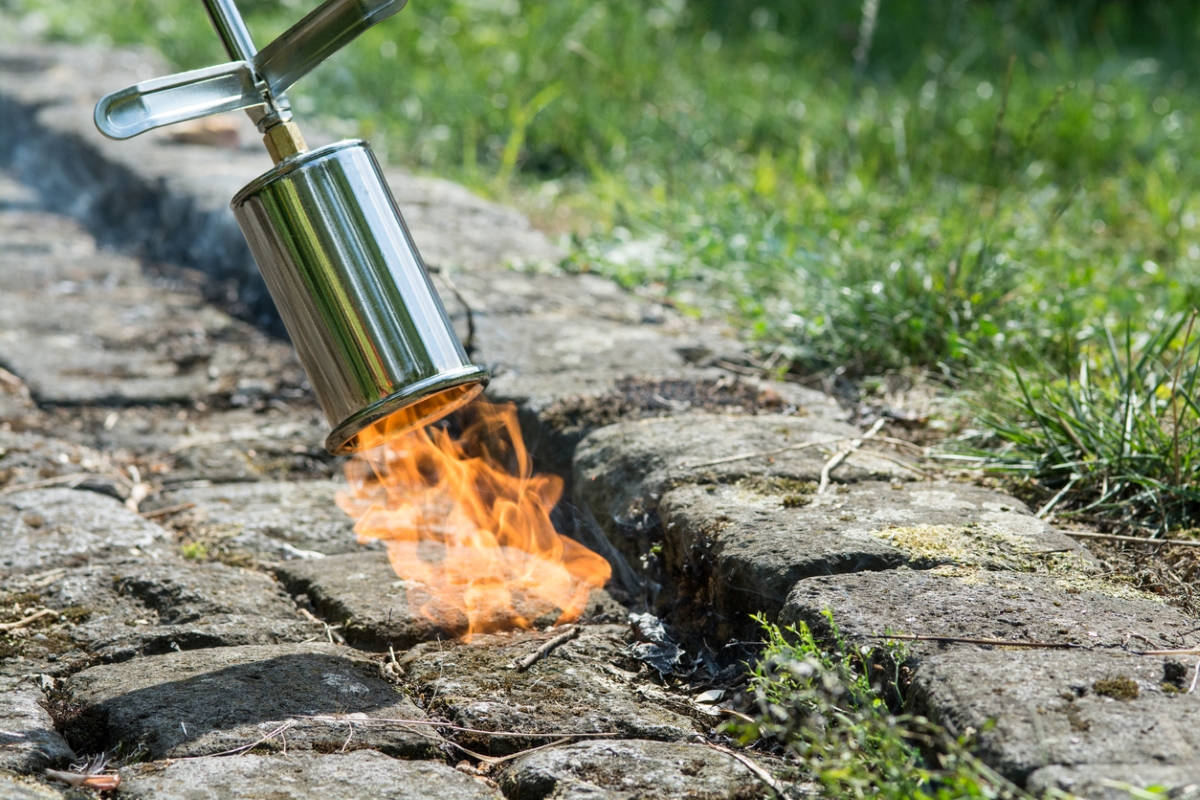
A weed torch works by heating the water inside the cells of plants. When the water turns to steam, the cells explode and the plant dies. You don’t need to char the weeds, just wilt them. This takes some practice, but it is very effective.
Use caution with this method, of course, especially on windy days or in drought-prone areas. Don’t ever use it on poison ivy or other poisonous plants because it can release their oils into the air and ultimately into your eyes or lungs. Finally, be careful where you use the weed torch. The heat will melt plastic borders and landscape fabrics.
Apply an organic commercial solution.
Online or at a garden center, you should be able to find commercial preparations that use natural ingredients to kill weeds. Some, like this product from Natural Armor, contain “industrial strength” vinegar. Others contain iron, which kills weeds by overfeeding them, and some contain citric acid or citric oil, the acidity of which will get rid of unwanted plants. Cornmint oil, derived from the Mentha arvensis (wild mint) plant, is another ingredient found in natural weed-killing products.
How to Prevent Weeds Naturally
Optimally, of course, you’d prevent weeds from growing in the first place, so you don’t have to mess with killing them. But odds are, you’ve had to do some weed cleanup. Now, on your quest for weed-free gardening, endeavor to prevent new ones from growing.
Promptly pull them by hand.
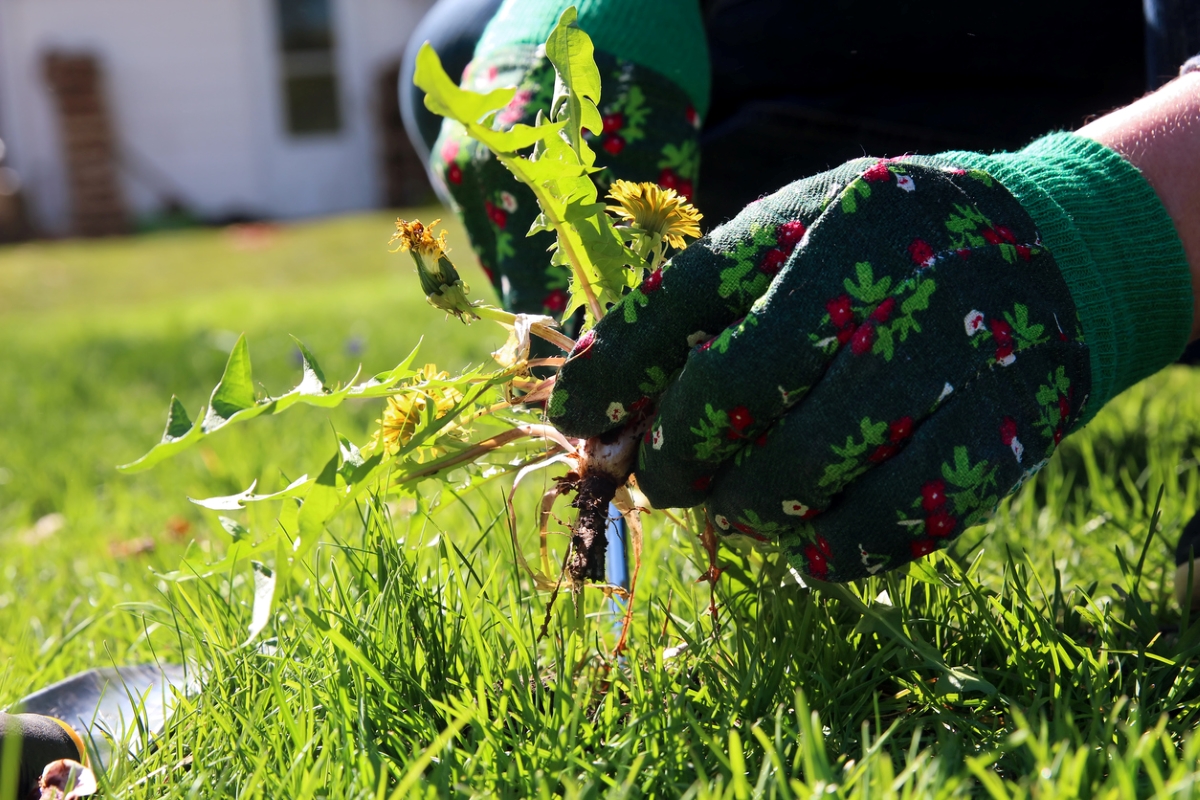
Before a colony of weeds can take root in your garden beds or lawn, be vigilant about hand-pulling individual weeds as they emerge. Wear a dedicated pair of gardening gloves for the task to avoid inadvertently transferring weed seeds where you don’t want them. Weed-removal tools such as claws or sharp trowels can help you loosen the weed roots from the soil. Pulling a weed completely out by the root is the only way to ensure it will not return.
Spread corn gluten meal in the garden.
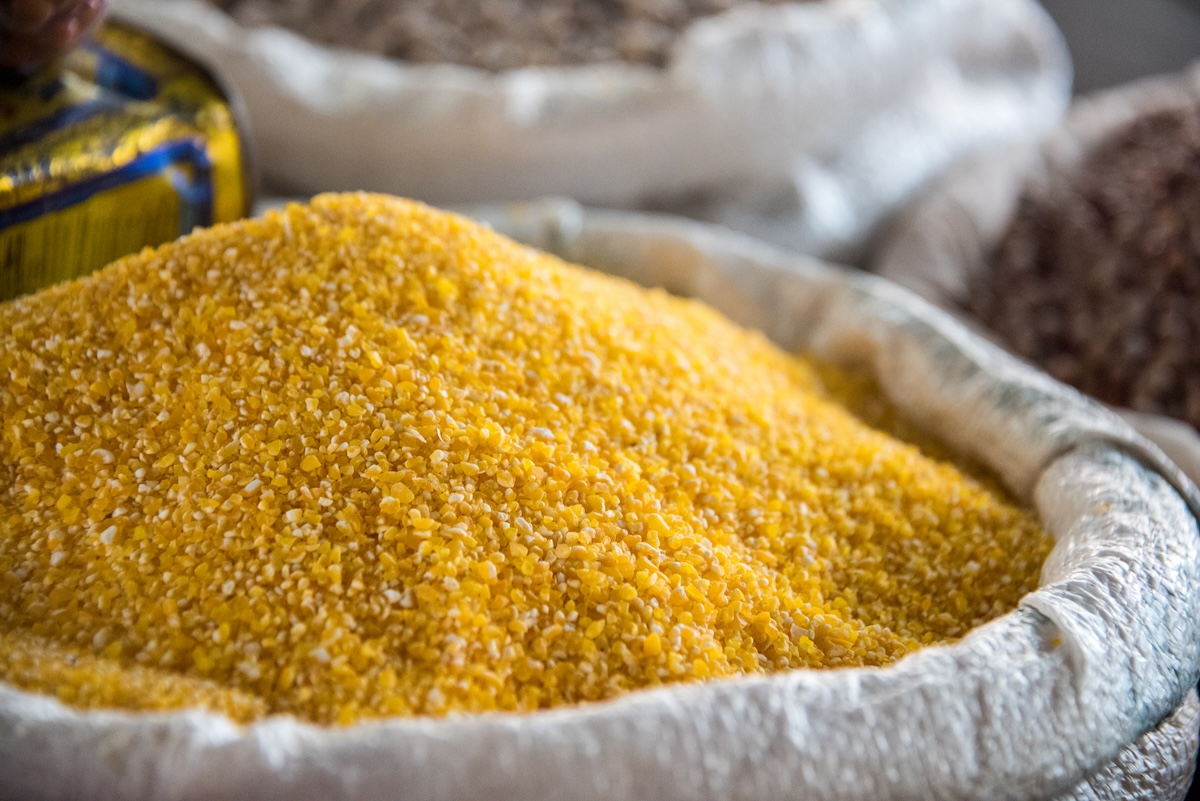
Corn gluten meal is like birth control for seeds: Sprinkle it on exposed areas of your garden to prevent weed seeds from germinating and growing into plants. Of course, corn gluten meal might keep other seeds from germinating too, so don’t try this method in your vegetable garden until your plants are established and you’ve finished planting seeds.
Layer on some mulch.
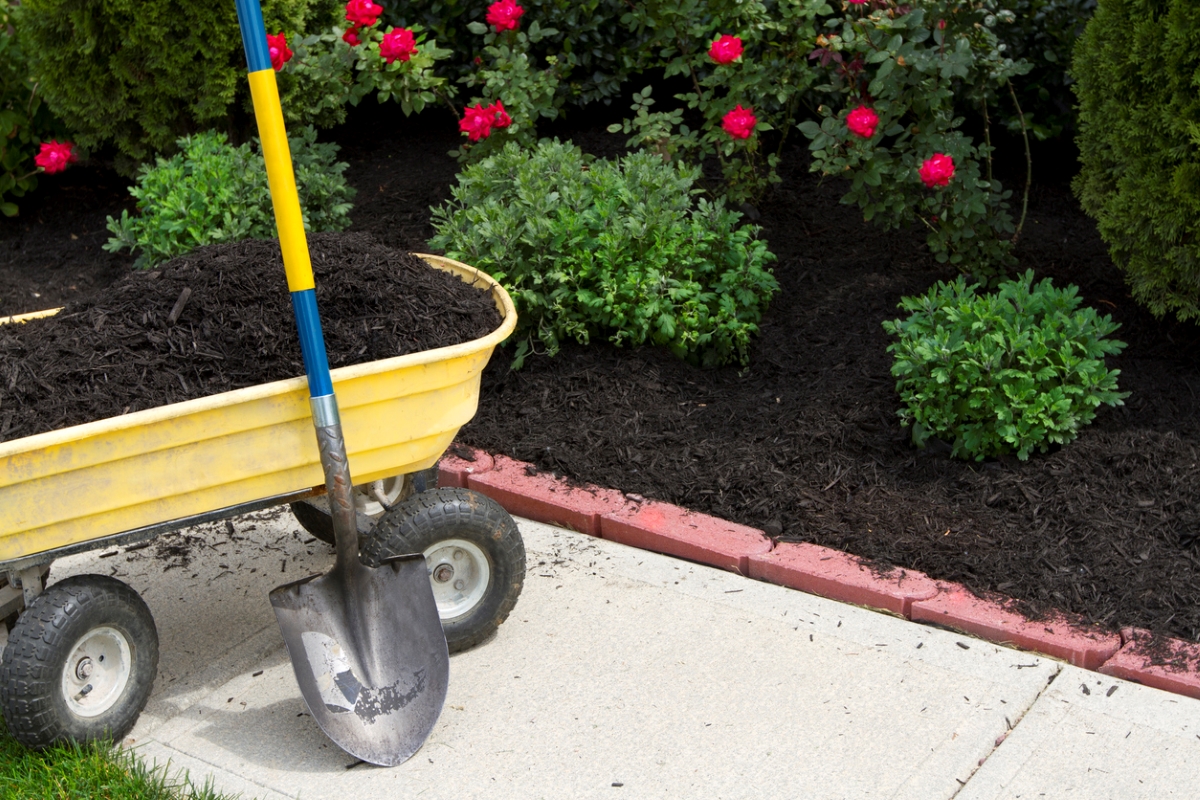
Cover your planting areas with a few inches of mulch and you’ll prevent weed seeds from coming into contact with the soil in the first place. Because mulch will also keep sunlight from reaching seeds that are already underground, they won’t get a chance to sprout. Organic mulches offer the added benefits of retaining moisture and breaking down to enrich the soil below. Bonus: A fresh layer of mulch amps up your curb appeal, too.
Plant ground cover.
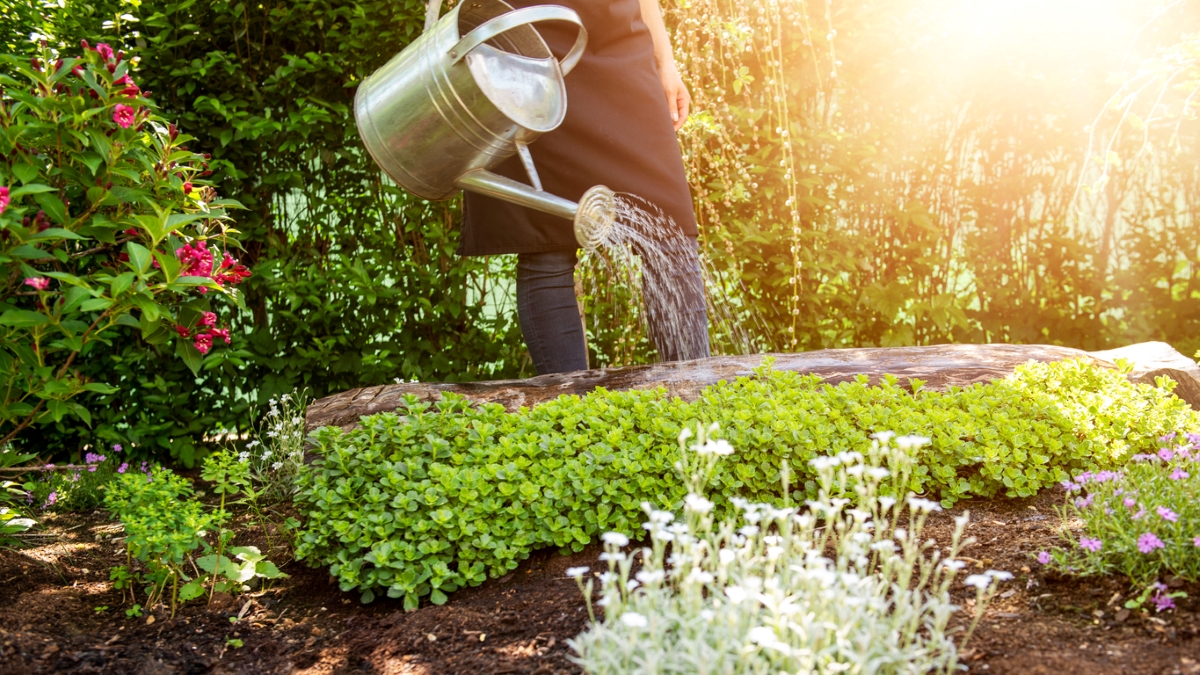
Weeds mostly attack bare, open soil. Protect these weed-prone sites with ground cover, or low-growing plants that spread across and close to the soil and make it more difficult for weed seeds to get through. Plus, if these seeds do try to take root, they receive little to no light. As a bonus, you get to buy and enjoy some new plants that add evergreen or flowering color.
The best ground cover for your garden depends on your growing zone and where you need the greenery. Some good candidates include creeping thyme (Thymus serpyllum), especially between walkway stones; bugleweed (Ajuga), which thrives in shade; and ice plant (Delosperma), a sun- and heat-loving succulent.
Lay down landscape fabric.
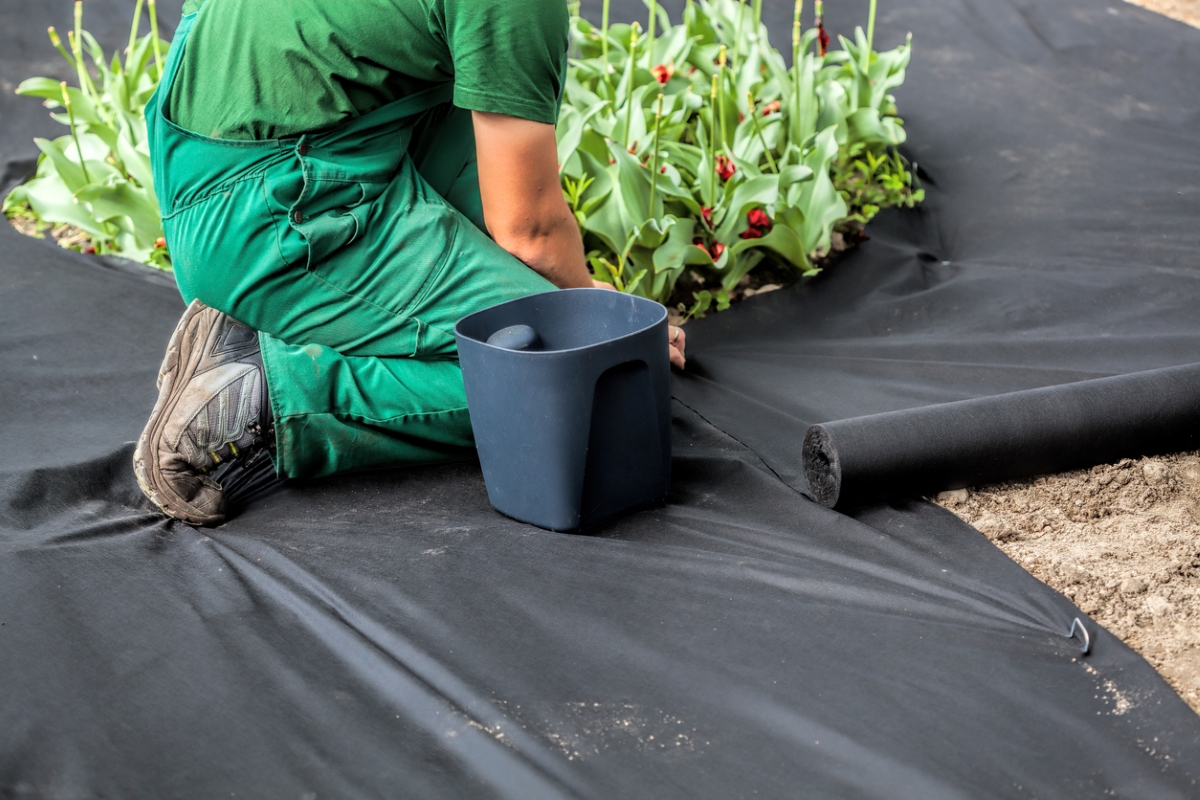
Much derided in some circles, landscape fabric has its place in gardens when used correctly. Today’s fabrics are not like the old nonpermeable landscape plastic, which basically depletes the soil beneath it. Quality landscape fabric lets air and water through while preventing weed seeds from rooting. Use the fabric prudently, such as along walkways (covered with mulch, gravel, or crusher fines), to cut down on weeds in those spots where you aren’t growing plants. The fabric works best at weed suppression if it is laid from border to border, with as few cuts or openings as possible.
Plant cover crops.
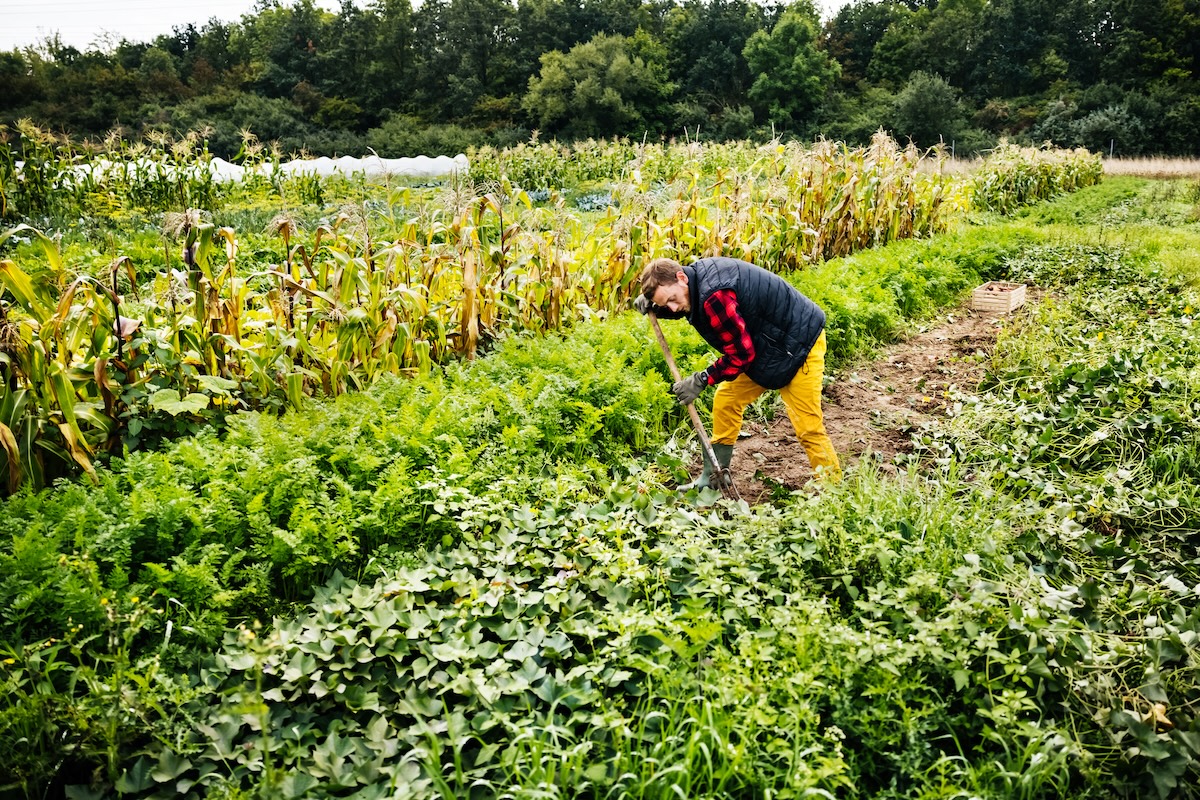
Also known as “green manure,” cover crops are plants that are typically sown in fall and grow in winter. They’re similar to ground covers in their ability to cut down on weed growth, but they also help improve the health of the soil. Come spring, they’re plowed or tilled under, and the plants and their nutrients are incorporated into the soil. Although cover crops are largely a farming practice, they can work for home gardeners as well, especially in vegetable gardens during the off-season.
Check with local nurseries, landscapers, or extension offices for the best cover crop for your area. Choose a native or local favorite for the greatest success and the least amount of watering and care. Most cover crops are from the legume, grass, and grain families. Some popular examples are winter wheat, certain clovers, and cereal rye.
Solarize garden beds.
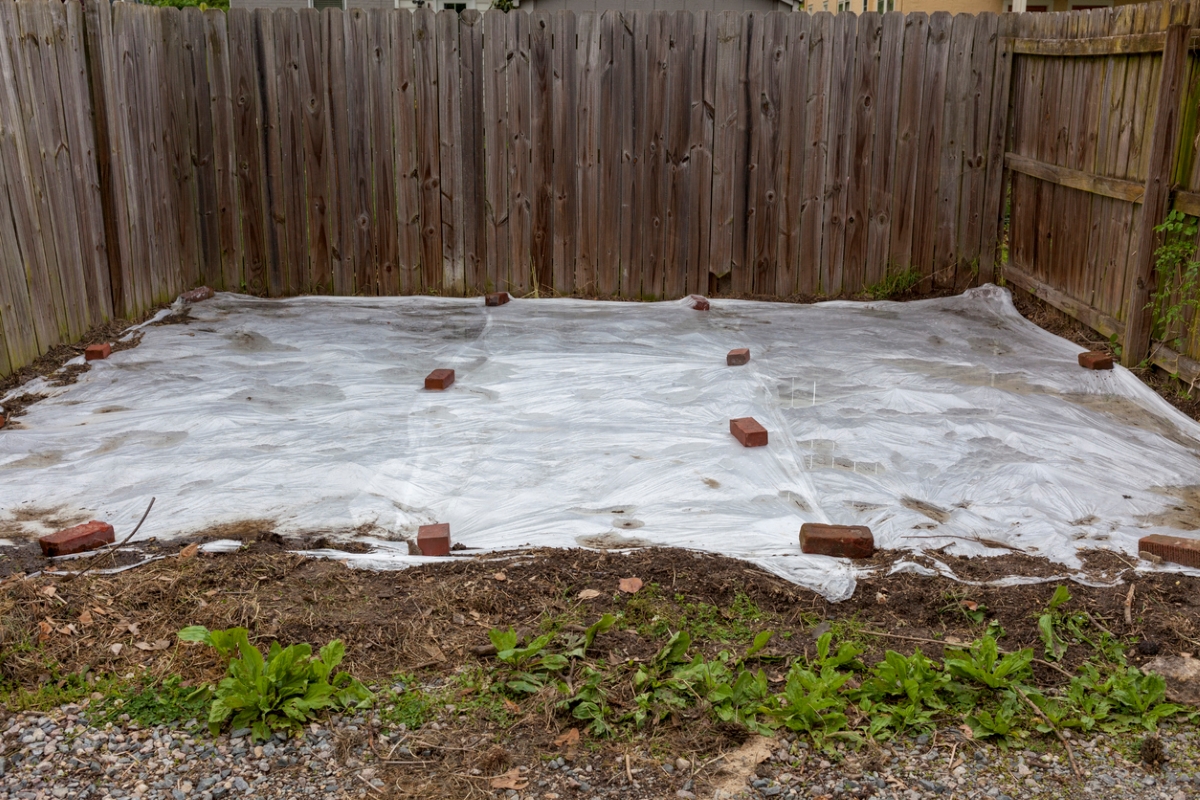
Similar to smothering, solarization kills existing weeds, but is a little more effective at preventing most annual weeds from emerging. This method uses clear plastic to let in sunlight First remove debris and live weeds, then till or turn the soil (to bring weed seeds closer to the surface). Next, wet the loosened ground and cover it with thin clear plastic and secure it by layering loose dirt on all its edges.
Temperatures under the plastic of at least 99 degrees Fahrenheit for 2 to 4 weeks are optimal to stop weeds, so it is most effective in summer to prepare future beds. In cooler climates, leave the plastic on for up to 6 weeks if desired. This method also can improve soil health. Painter’s plastic drop cloths are readily available from home improvement retailers. One downside to these cloths is that the thin plastic can rip, so double the plastic over if you can.
Change your mowing routine.
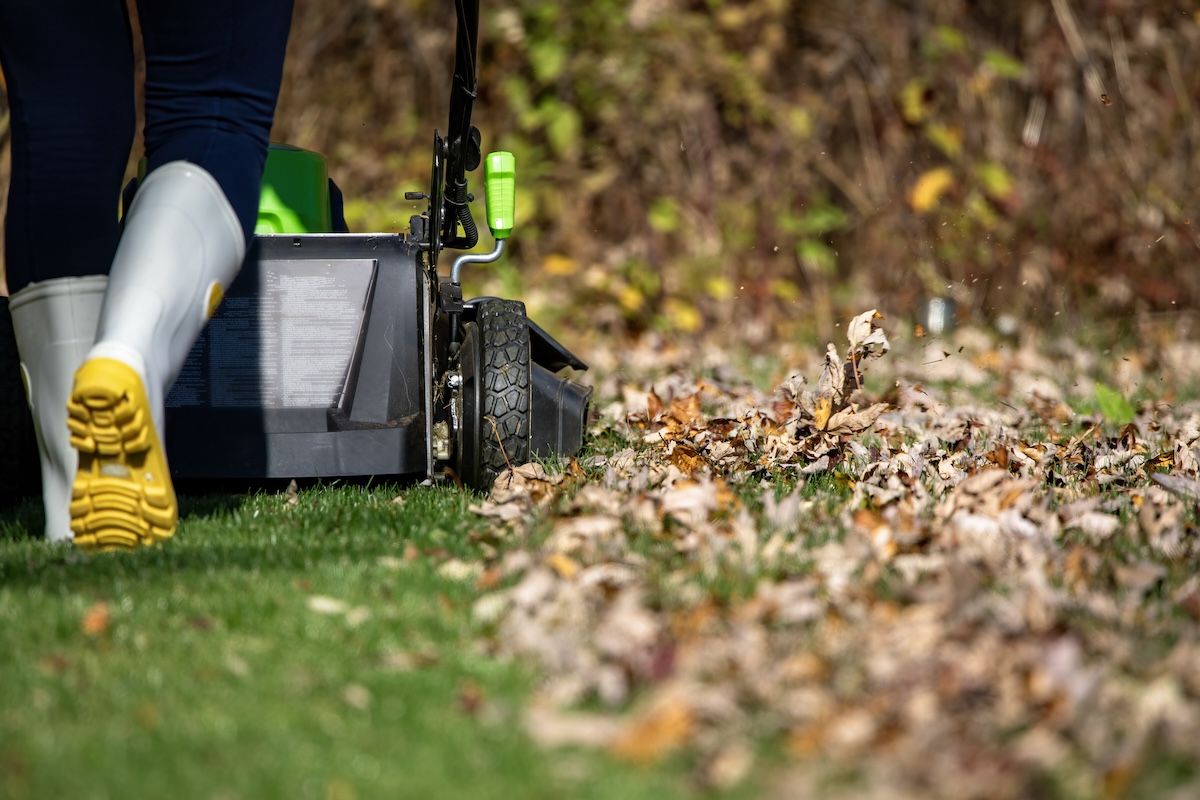
Another natural weed killer for lawn weeds involves has to do with your lawn maintenance schedule. Consider mowing more frequently, but to a taller height than perhaps you’re accustomed to. Changing your mowing height to 3 or 4 inches enables your lawn to grow more densely, which can crowd out weeds. Additionally, frequent mowing offers more opportunities to lop off developing weed seed heads before they can do their damage.
Add organic matter to your soil.

Some weeds actually prefer compacted, nutrient-deficient soil. If you keep your soil healthy, you might discourage weedy plants from settling in. Add organic matter to your soil and mix it in well, breaking up the soil to keep it loose and welcoming to desirable plants.
Adjust your watering schedule.
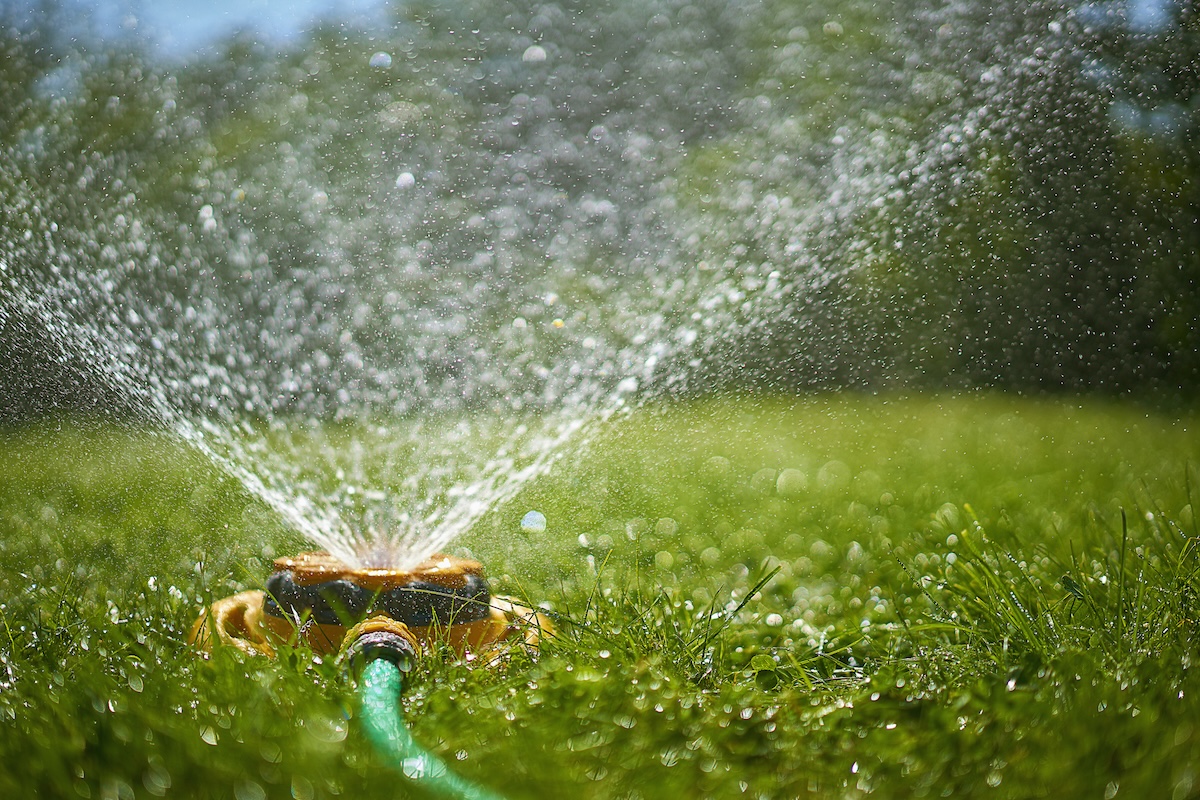
Watering deeply but less frequently allows turfgrass lawns to produce deep roots and grow stronger overall. A healthy lawn is better able to squeeze out weeds, whereas a weak lawn is susceptible to takeover by unwanted invaders. Take this into consideration when determining your irrigation schedule.
